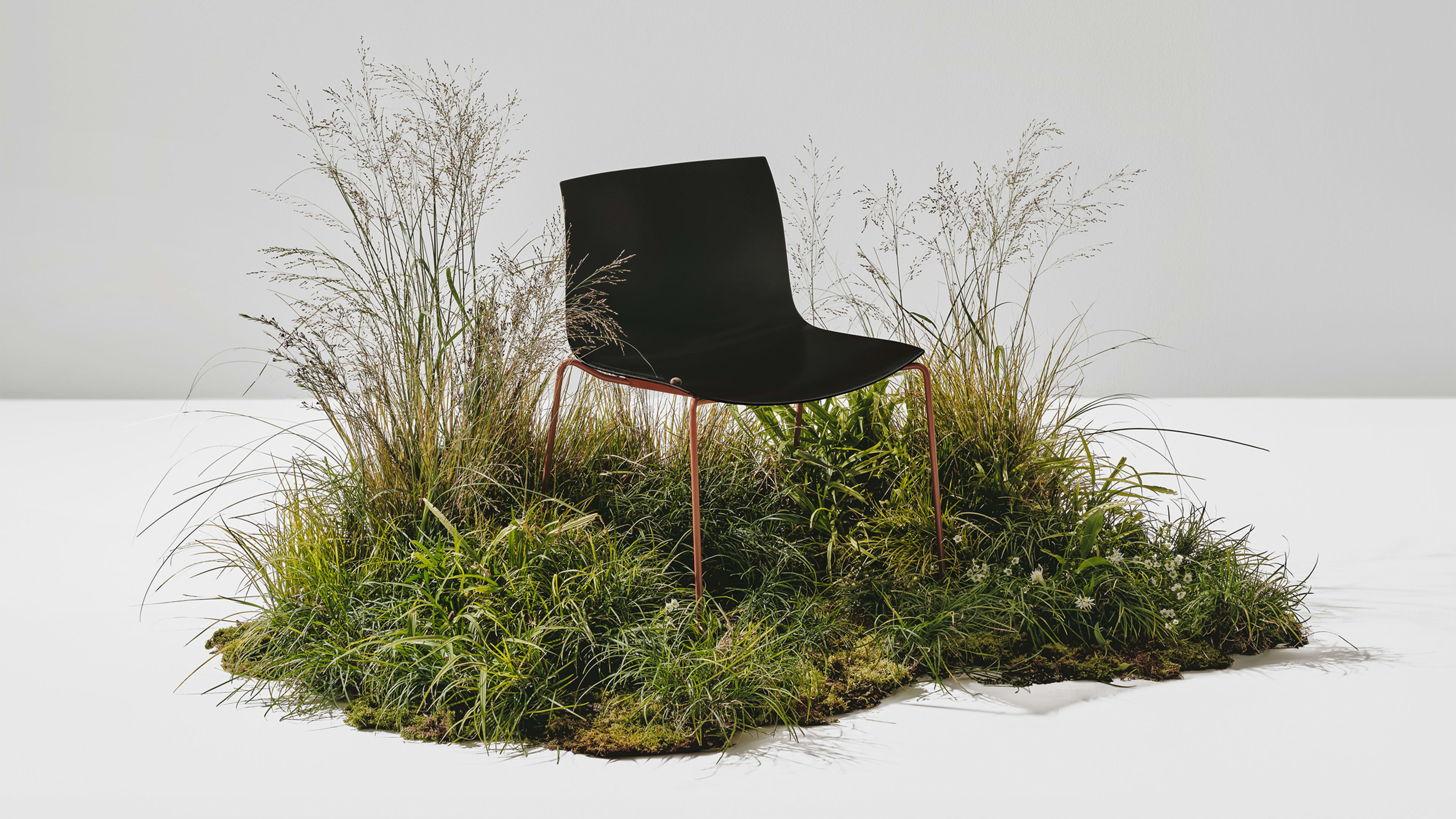The Italian design brand Arper just debuted a new version of its iconic office chair, the Catifa 53. But instead of leather, metal, or plastic, the updated Catifa Carta’s seat is made of 29 layers of paper—and it’s designed to sequester carbon.
The chair’s innovative material was created by PaperShell, a Swedish startup founded in 2021 with the goal of producing alternatives for traditional plastic. To manufacture the artificial wood, PaperShell starts with by-products like sawdust, chips, and branches. Those locally-sourced materials are then processed into kraft paper, which is layered and pressed together with a natural resin. What results is a material that’s both load-bearing and moldable. Notably, more carbon is stored during this process than released: One kilogram of PaperShell translates to about 1.58 kilograms of CO2 that might otherwise be released into the atmosphere.
According to PaperShell cofounder Anders Breitholtz, the material can be used to make anything from skateboards to car components. But the company is still in its early stages, and dropping a new material is “very much about pinpointing the right players” to work with. Arper’s Catifa Carta chair will be the first time that a furniture manufacturer incorporates PaperShell in a design.

A new take on sustainability
When Arper CEO Roberto Monti first joined the company two years ago, he found a number of sustainability initiatives in the company’s past, but no holistic future plan. So, he made it a priority to “start connecting the dots.” Now, Arper’s three-part sustainability initiative includes commitments to improve the wellbeing of employees and consumers, start the transition to a circular economy, and reduce environmental impact.

“[PaperShell and Arper’s] view on sustainability was very much aligned,” Breitholtz says. “We talked about it in the context that sustainability is so much more than impact reduction, or fear, or guilt, or something dystopian—it’s also something that could be really interesting through an art or design perspective.”
Both Breitholtz and Monti embrace the concept of “aesthetic sustainability,” or the idea that beautiful, well-made items prevent the constant upgrading of home goods. When the office chair does eventually reach the end of its usability, its PaperShell seat can be turned into something called biochar, a form of charcoal that stores carbon and can be used as soil enhancement.

Building the chair
For a recent startup like PaperShell, collaborating with a designer furniture brand on a new iteration of its best-selling product certainly wasn’t simple. Monti would be the first to admit that Arper is “super picky when it comes to attention to detail and quality,” so PaperShell’s final seat had to fit the Catifa 53’s classic shape while meeting Arper’s strict brand standards.
These guidelines meant that the two companies experimented with various prototypes until they landed on a perfect balance. Minimalist legs and a gently sloping back mirror the original chair’s sleek silhouette, but instead of painting the finished chair or covering it in fabric, the two teams decided to leave the PaperShell material visible. It’s a dark, wood-like finish with natural imperfections make each piece unique.
“I want to give credit to [Breitholtz] and PaperShell, because the easiest route would have been to start with flat products—you could start to build up production lines and make good business out of it,” Monti says. “But if you want to make a difference, and if you want to approach the major challenges, you need to go into more difficult things. This material can allow you to work in 3D, and that’s what we’re doing.”
The Catifa Carta’s shell will be offered in coffee and graphite colors, and customers can choose between a variety of options for the chair’s legs. Pricing is available upon request to a local sales representative.
Recognize your brand’s excellence by applying to this year’s Brands That Matter Awards before the final deadline, June 7.
Sign up for Brands That Matter notifications here.
